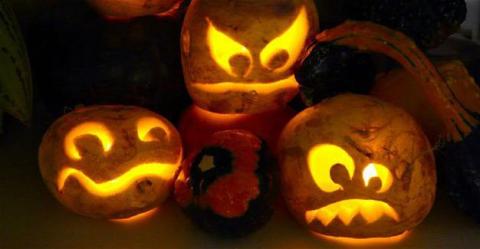Turnip Time

As American as apple pie, Halloween is generally perceived as a truly American invention, and often blamed as an invasion of American culture spreading rapidly across the world.
In reality, it is a transformed old world tradition with deep roots in Pagan culture. However, when we look at the iconic Halloween tastes of the old world, there is a confusing trans-ocean exchange of old and new, some classics of the old world Halloween tables are based on hitherto New World novelties, such as potatoes. At every Irish Halloween (or Samhain), a generous plate of colcannon, a butter-laden, mashed potato with kale or cabbage, is present as the ultimate soul-comfort food.
Halloween has its roots in the Celtic celebration of the harvest season, marking the transition of seasons, straddling between the end of summer and the start of winter. It also stands for the fragile boundary between life and death, symbolizing the renewal of life cycles. Winter months are often associated with death; nature freezes to a dormant state only until the awakening of spring. In the Celtic calendar, the end of the October was also the end of the year, and on the last night of the year, the transition between the world of the dead and the living would become blurred. It was believed that the dead would return to the earth to visit the living, telling them about their future and fortune. In the darkness of the night, they'd need some guidance to find their homes, so families would light fires and hang lanterns on door gates and place candles in windowsills to lead the souls of the deceased back home.
The pumpkin lantern practice has its roots in that tradition, but of course there were no pumpkins in the old, old world, as pumpkins are North American vegetables, unlike...
- Log in to post comments
